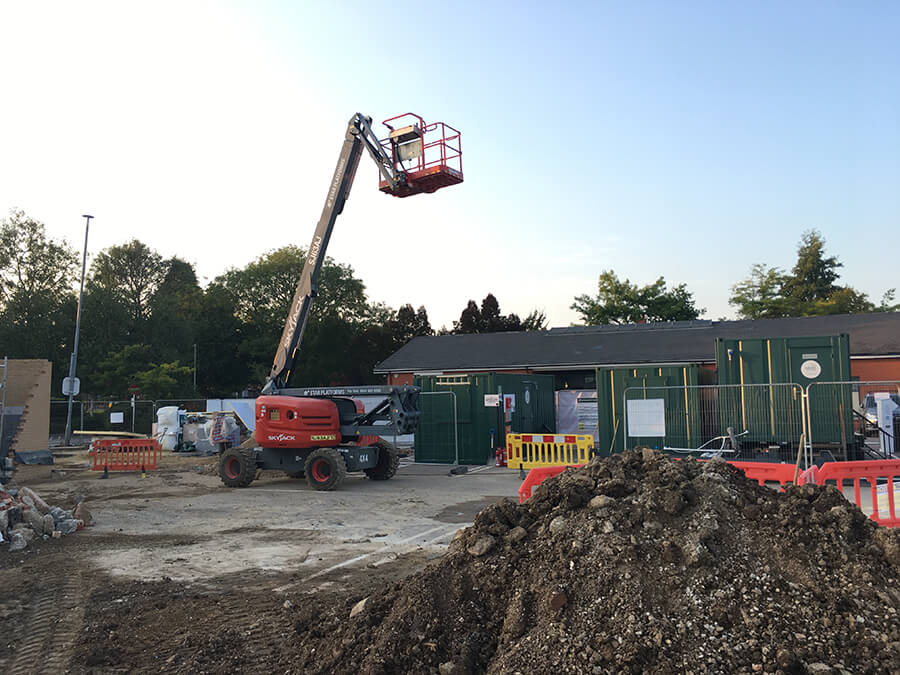Building an extension without scaffolding is going to be challenging. Your extension project’s specific needs and requirements will determine the available options you have to acquire a safe working platform. Have look at the following options to see which is the best fit to build your extension without the traditional scaffold.
1. Mobile towers

Another alternative that you can use when building an extension instead of scaffolding is a mobile tower. The tower is freestanding and lightweight making it easy to move them from one point to the other while doing different tasks. You should ensure the surface is level for ease of movement. The tower can also be easily adjusted depending on the project you’re working on.
2. Trestle and boards
Trestles and boards can be used to create a sturdy working platform at a height that is suitable for the job. It’s a good option for smaller jobs where the height required is relatively low. It can easily be moved from one spot to the other because it’s basically a platform supported by two tripod-type movable ladders. Budget-friendly and high enough to build your back garden extension.
3. Temporary Staging

Temporary staging can be used to provide a safe and stable work platform for workers. This method often involves building a platform or staging area that is often supported by adjustable legs or not.
4. Ladder access platform

A ladder with a platform can be a useful tool for building extensions without the need for traditional scaffolding. With a platform that can be adjusted to different heights. Most will be around up to 3m high. This ladder can provide a stable and secure work platform for workers during the construction of a residential house extension. The ladder can be extended to reach higher areas of the structure, making it a versatile and adaptable option for a range of house extension projects. However, as with any ladder system, it’s important to use it safely and follow the manufacturer’s instructions to ensure that all necessary safety measures are in place. When used correctly, a ladder with a platform can be a practical alternative to scaffolding for smaller projects.
5. Podium steps
6. Use of boom lifts

A boom lift is also known as mobile elevated work platform ( MEWP ) or cherry pickers. Boom lifts are a safe alternative that you can use in place of scaffolding. With the elevated work platforms, workers can get safe access to unreachable areas. Operators should be properly trained so as to avoid some hazardous situations such as falling, collision or entrapment. It’s also advisable to check how level the ground is because this will impact the ease of movement for the MEWP.
7. Suspended scaffolding
Suspended scaffolding can be used when it’s not possible to build scaffolding from the ground up. This involves suspending a platform from the roof of the building or from another suitable anchor point. The amount of space you have and how the ground is will determine whether you’ll require suspended scaffolding for your project. Proper planning and regular inspections are crucial if that is what you’ll use for your house extension.
8. Crane access
If you have no scaffolding, using a crane is one way to make the construction process faster and more efficient. For larger jobs, a crane can be used to lift materials and workers to the required height. This can be a more expensive option, but it can be more efficient than using scaffolding. You should ensure the crane is safely and correctly used to avoid any accidents.
Even with the different alternatives that you can opt for instead of scaffolding, you should ensure that you choose a safe option. When working with a qualified expert it will be easier to choose a reliable option based on the tasks that need to be done.